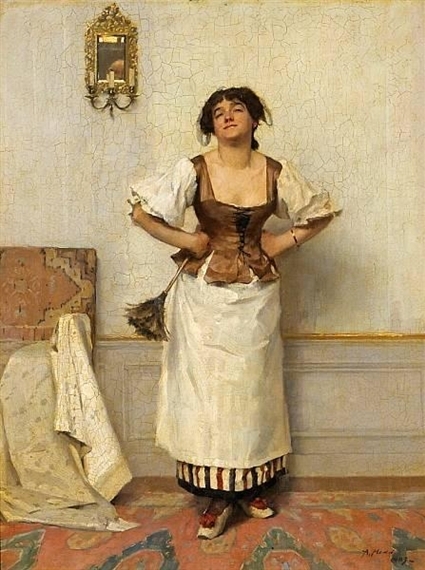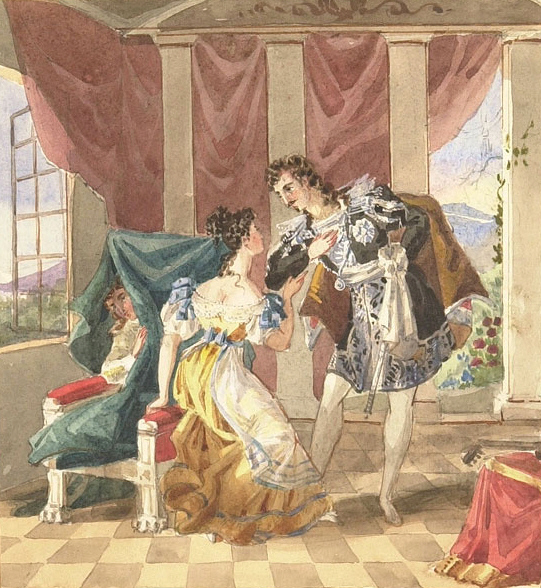|
Rosa Asmundsen
Rosa Anna Charlotte Asmundsen (29 December 1846 – 15 January 1911) was a Norwegian actress and singer. Early life Rosa Anna Charlotte Asmundsen was born on 29 December 1846 in Christiania (now Oslo) to Italian plaster manufacturer Giovanni Baldani and Anna Eriksdatter. She married the actor Jacob Hveding Asmundsen (1841–1910) and together they were the parents of actor Sigurd Asmundsen (1871–1934). Career She excelled as a child actress and had several roles at the Christiania Theatre, including the boy roles of Egil in '' The Vikings at Helgeland'' (1858–1859) and the title role in '' Ole Lukøje'' (1860). She made her adult debut at the Christiania Theatre in the spring of 1865, as Thora in ''Et Enfoldigt Pigebarn''. From 1865 to 1867, she performed at the Folketeatret in Christiania and participated in the theatre's tour to Sweden, with performances in Gothenburg and Stockholm in August 1866. From 1867 to 1868, she performed with Theodor Cortes' travelling compa ... [...More Info...] [...Related Items...] OR: [Wikipedia] [Google] [Baidu] |
Oslo
Oslo ( , , or ; sma, Oslove) is the capital and most populous city of Norway. It constitutes both a county and a municipality. The municipality of Oslo had a population of in 2022, while the city's greater urban area had a population of in 2019, and the metropolitan area had an estimated population of in 2021. During the Viking Age the area was part of Viken. Oslo was founded as a city at the end of the Viking Age in 1040 under the name Ánslo, and established as a ''kaupstad'' or trading place in 1048 by Harald Hardrada. The city was elevated to a bishopric in 1070 and a capital under Haakon V of Norway around 1300. Personal unions with Denmark from 1397 to 1523 and again from 1536 to 1814 reduced its influence. After being destroyed by a fire in 1624, during the reign of King Christian IV, a new city was built closer to Akershus Fortress and named Christiania in honour of the king. It became a municipality ('' formannskapsdistrikt'') on 1 January 1838. The city fu ... [...More Info...] [...Related Items...] OR: [Wikipedia] [Google] [Baidu] |
Den Nationale Scene
Den Nationale Scene ( en, National Theater) is the largest theatre in Bergen, Norway. Den Nationale Scene is also one of the oldest permanent theatres in Norway. History Opened under the name '' Det Norske Theater'' in 1850, the theatre has roots dating back to its founding on the initiative of the Norwegian violinist Ole Bull. The theatre was created to develop Norwegian playwrights. Henrik Ibsen was one of the first writers-in-residences and art-directors of the theatre and it saw the première in Norway of his first contemporary realist drama ''The Pillars of Society'' (''Samfundets støtter'') on 30 November 1877. The theatre was initially housed in the ''Komediehuset på Engen''. In 1909, The National Theatre moved into the new theatre building at Engen. The current theatre building was designed by Einar Oscar Schou, and opened 19 February 1909 with a production of ''Erasmus Montanus'' by Ludvig Holberg. King Haakon VII of Norway and Queen Maud were in attendance. It soon b ... [...More Info...] [...Related Items...] OR: [Wikipedia] [Google] [Baidu] |
Actresses From Oslo
An actor or actress is a person who portrays a character in a performance. The actor performs "in the flesh" in the traditional medium of the theatre or in modern media such as film, radio, and television. The analogous Greek term is (), literally "one who answers".''Hypokrites'' (related to our word for hypocrite) also means, less often, "to answer" the tragic chorus. See Weimann (1978, 2); see also Csapo and Slater, who offer translations of classical source material using the term ''hypocrisis'' (acting) (1994, 257, 265–267). The actor's interpretation of a rolethe art of actingpertains to the role played, whether based on a real person or fictional character. This can also be considered an "actor's role," which was called this due to scrolls being used in the theaters. Interpretation occurs even when the actor is "playing themselves", as in some forms of experimental performance art. Formerly, in ancient Greece and the medieval world, and in England at the time ... [...More Info...] [...Related Items...] OR: [Wikipedia] [Google] [Baidu] |
19th-century Norwegian Women Singers
The 19th (nineteenth) century began on 1 January 1801 ( MDCCCI), and ended on 31 December 1900 ( MCM). The 19th century was the ninth century of the 2nd millennium. The 19th century was characterized by vast social upheaval. Slavery was abolished in much of Europe and the Americas. The First Industrial Revolution, though it began in the late 18th century, expanding beyond its British homeland for the first time during this century, particularly remaking the economies and societies of the Low Countries, the Rhineland, Northern Italy, and the Northeastern United States. A few decades later, the Second Industrial Revolution led to ever more massive urbanization and much higher levels of productivity, profit, and prosperity, a pattern that continued into the 20th century. The Islamic gunpowder empires fell into decline and European imperialism brought much of South Asia, Southeast Asia, and almost all of Africa under colonial rule. It was also marked by the collapse of the large ... [...More Info...] [...Related Items...] OR: [Wikipedia] [Google] [Baidu] |
19th-century Norwegian Actresses
The 19th (nineteenth) century began on 1 January 1801 ( MDCCCI), and ended on 31 December 1900 ( MCM). The 19th century was the ninth century of the 2nd millennium. The 19th century was characterized by vast social upheaval. Slavery was abolished in much of Europe and the Americas. The First Industrial Revolution, though it began in the late 18th century, expanding beyond its British homeland for the first time during this century, particularly remaking the economies and societies of the Low Countries, the Rhineland, Northern Italy, and the Northeastern United States. A few decades later, the Second Industrial Revolution led to ever more massive urbanization and much higher levels of productivity, profit, and prosperity, a pattern that continued into the 20th century. The Islamic gunpowder empires fell into decline and European imperialism brought much of South Asia, Southeast Asia, and almost all of Africa under colonial rule. It was also marked by the collapse of the large S ... [...More Info...] [...Related Items...] OR: [Wikipedia] [Google] [Baidu] |
1911 Deaths
A notable ongoing event was the Comparison of the Amundsen and Scott Expeditions, race for the South Pole. Events January * January 1 – A decade after federation, the Northern Territory and the Australian Capital Territory are added to the Commonwealth of Australia. * January 3 ** 1911 Kebin earthquake: An earthquake of 7.7 Moment magnitude scale, moment magnitude strikes near Almaty in Russian Turkestan, killing 450 or more people. ** Siege of Sidney Street in London: Two Latvian people, Latvian anarchists die, after a seven-hour siege against a combined police and military force. Home Secretary Winston Churchill arrives to oversee events. * January 5 – Egypt's Zamalek SC is founded as a general sports and Association football club by Belgian lawyer George Merzbach as Qasr El Nile Club. * January 14 – Roald Amundsen's South Pole expedition makes landfall, on the eastern edge of the Ross Ice Shelf. * January 18 – Eugene B. El ... [...More Info...] [...Related Items...] OR: [Wikipedia] [Google] [Baidu] |
1846 Births
Events January–March * January 5 – The United States House of Representatives votes to stop sharing the Oregon Country with the United Kingdom. * January 13 – The Milan–Venice railway's bridge, over the Venetian Lagoon between Mestre and Venice in Italy, opens, the world's longest since 1151. * February 4 – Many Mormons begin their migration west from Nauvoo, Illinois, to the Great Salt Lake, led by Brigham Young. * February 10 – First Anglo-Sikh War: Battle of Sobraon – British forces defeat the Sikhs. * February 18 – The Galician slaughter, a peasant revolt, begins. * February 19 – United States president James K. Polk's annexation of the Republic of Texas is finalized by Texas president Anson Jones in a formal ceremony of transfer of sovereignty. The newly formed Texas state government is officially installed in Austin. * February 20– 29 – Kraków uprising: Galician slaughter – Polish nationalists stage an uprising in the Free City ... [...More Info...] [...Related Items...] OR: [Wikipedia] [Google] [Baidu] |
Soubrette
A soubrette is a type of operatic soprano voice ''fach'', often cast as a female stock character in opera and theatre. The term arrived in English from Provençal via French, and means "conceited" or "coy". Theatre In theatre, a soubrette is a comedy character who is vain and girlish, mischievous, lighthearted, coquettish and gossipy—often a chambermaid or confidante of the ingénue. She often displays a flirtatious or even sexually aggressive nature. The soubrette appeared in commedia dell'arte scenarios, often in the role of Columbina, where the actress would provide the details of her behavior and dialogue. From there, she moved to the works of Molière, which were influenced by the Commedia; the role of Dorine in ''Tartuffe'' (1664) fits the description. A famous example, though a hundred years later, is Suzanne in Beaumarchais' ''Le Mariage de Figaro'' (1784). Opera In classical music and opera, the term ''soubrette'' refers to both a soprano voice type and a type of opera ... [...More Info...] [...Related Items...] OR: [Wikipedia] [Google] [Baidu] |
The Marriage Of Figaro
''The Marriage of Figaro'' ( it, Le nozze di Figaro, links=no, ), K. 492, is a ''commedia per musica'' (opera buffa) in four acts composed in 1786 by Wolfgang Amadeus Mozart, with an Italian libretto written by Lorenzo Da Ponte. It premiered at the Burgtheater in Vienna on 1 May 1786. The opera's libretto is based on the 1784 stage comedy by Pierre Beaumarchais, '' La folle journée, ou le Mariage de Figaro'' ("The Mad Day, or The Marriage of Figaro"). It tells how the servants Figaro and Susanna succeed in getting married, foiling the efforts of their philandering employer Count Almaviva to seduce Susanna and teaching him a lesson in fidelity. Considered one of the greatest operas ever written, it is a cornerstone of the repertoire and appears consistently among the top ten in the Operabase list of most frequently performed operas. In 2017, BBC News Magazine asked 172 opera singers to vote for the best operas ever written. ''The Marriage of Figaro'' came in first out of ... [...More Info...] [...Related Items...] OR: [Wikipedia] [Google] [Baidu] |
Bergen
Bergen (), historically Bjørgvin, is a city and municipality in Vestland county on the west coast of Norway. , its population is roughly 285,900. Bergen is the second-largest city in Norway. The municipality covers and is on the peninsula of Bergenshalvøyen. The city centre and northern neighbourhoods are on Byfjorden, 'the city fjord', and the city is surrounded by mountains; Bergen is known as the "city of seven mountains". Many of the extra-municipal suburbs are on islands. Bergen is the administrative centre of Vestland county. The city consists of eight boroughs: Arna, Bergenhus, Fana, Fyllingsdalen, Laksevåg, Ytrebygda, Årstad, and Åsane. Trading in Bergen may have started as early as the 1020s. According to tradition, the city was founded in 1070 by King Olav Kyrre and was named Bjørgvin, 'the green meadow among the mountains'. It served as Norway's capital in the 13th century, and from the end of the 13th century became a bureau city of the Hanseatic Leag ... [...More Info...] [...Related Items...] OR: [Wikipedia] [Google] [Baidu] |

.jpg)







